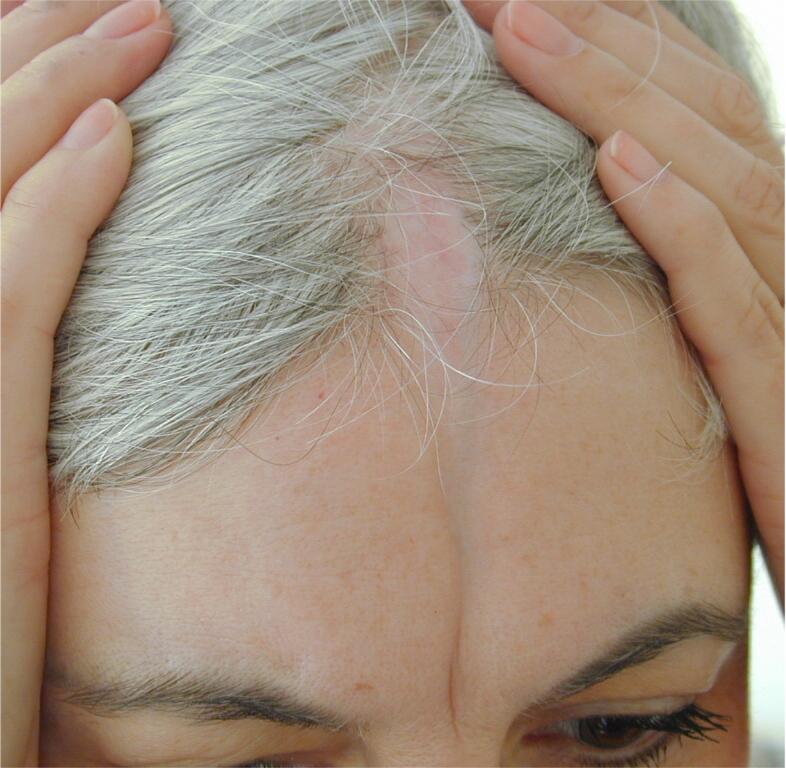Rare Localized Scleroderma Subtype Manifests as Distinctive Facial Scarring, Highlighting Complex Interplay of Autoimmune Processes
An “Images in Medicine” case report details the presentation and management of en coup de sabre, a rare linear subtype of localized scleroderma. The 70-year-old female patient’s distinctive forehead lesion, resembling a sword strike, underwent thorough clinical, histological, and radiological evaluation. This case illustrates the diagnostic approach and treatment considerations for this uncommon dermatological condition.
Key Points:
- Patient: 70-year-old woman with hypothyroidism
- Presenting symptom: 1-year history of progressive indentation and darkening of forehead skin
- Physical examination revealed:
- Paramedian, linear, atrophic depression with violaceous border on right forehead
- Extension from orbital rim to frontal scalp
- Associated cicatricial alopecia
- Skin biopsy findings:
- Perivascular infiltrate of lymphocytes, eosinophils, and plasma cells
- Vacuolar interface dermatitis
- Dermal scarring
- Consistent with mixed early- and late-stage scleroderma
- Serum testing for autoantibodies was negative
- Diagnosis: En coup de sabre, a linear subtype of localized scleroderma (morphea)
- Characteristics of en coup de sabre:
- Named for resemblance to a sword strike scar
- Can progress to involve orbits and brain
- Imaging:
- MRI of the head indicated due to potential progression
- Results were normal in this case
- Treatment:
- 8-month course of abatacept
- Resulted in reduction of lesion activity and size
- Important distinctions:
- Localized scleroderma (morphea) is an idiopathic, inflammatory, sclerotic skin disease
- Distinct from systemic sclerosis

En coup de sabre represents a rare but clinically significant subtype of localized scleroderma. Physicians should be aware of its distinctive presentation, potential for extracutaneous involvement, and the importance of thorough evaluation including skin biopsy and neuroimaging. Treatment with immunomodulators like abatacept may lead to improvement in lesion activity and size.
More in Dermatology
